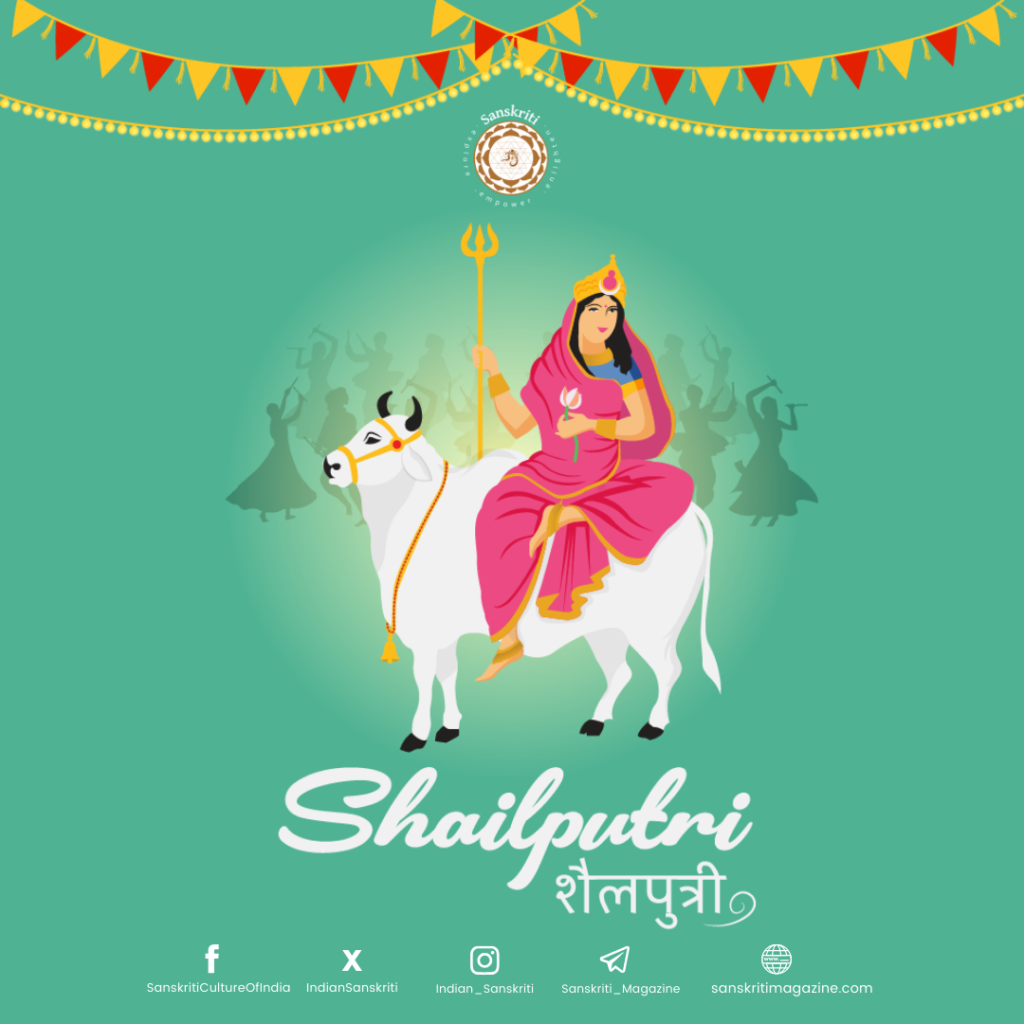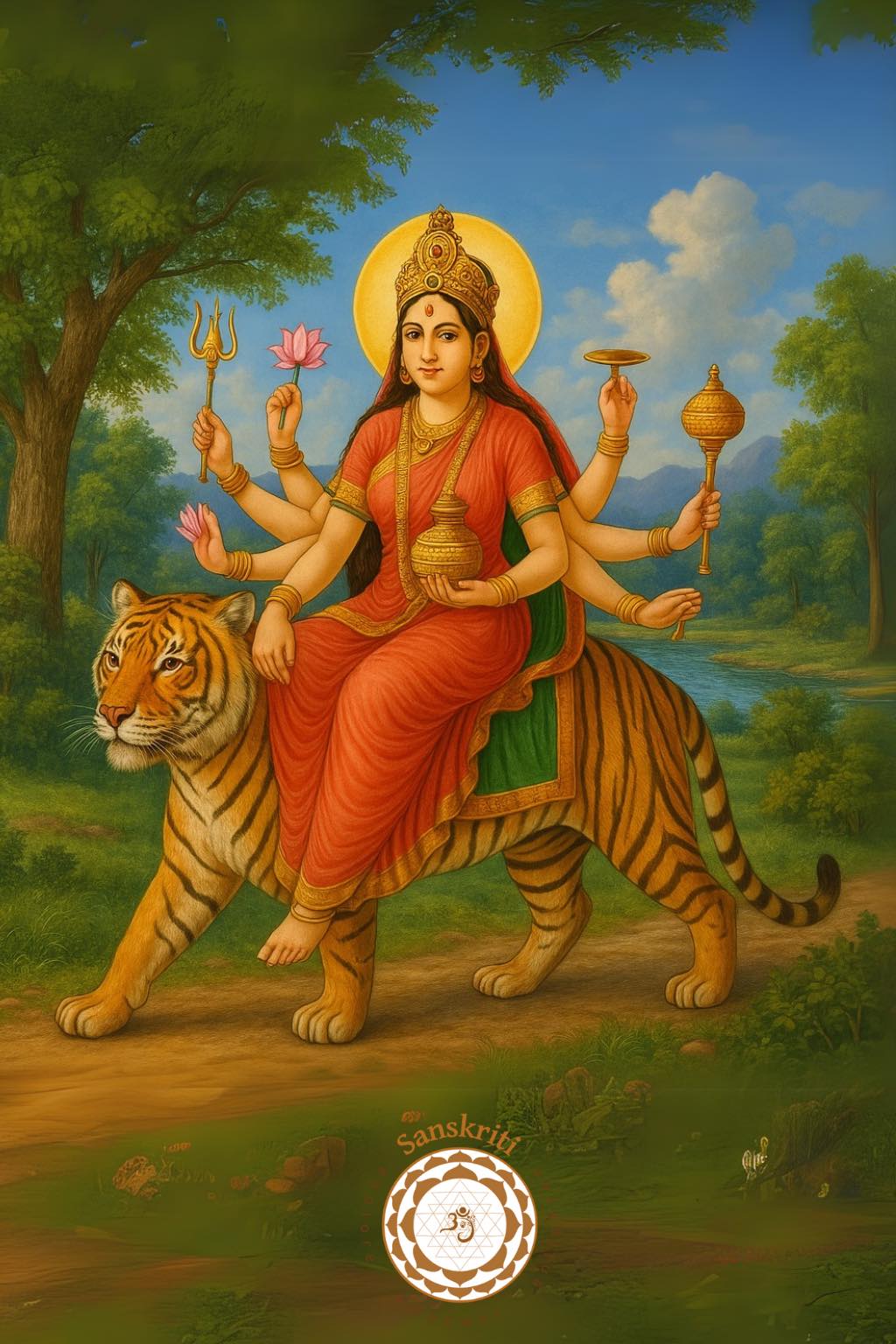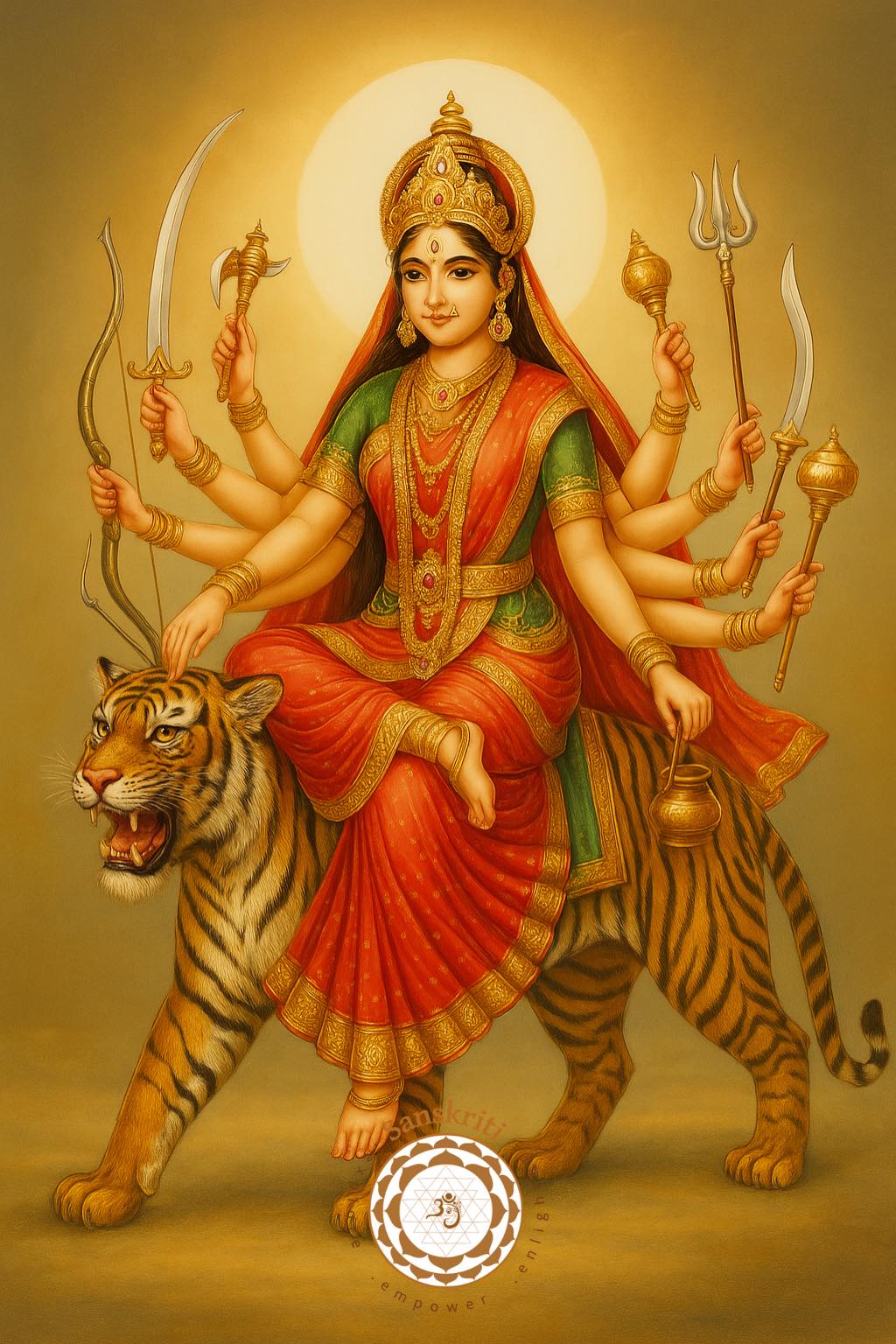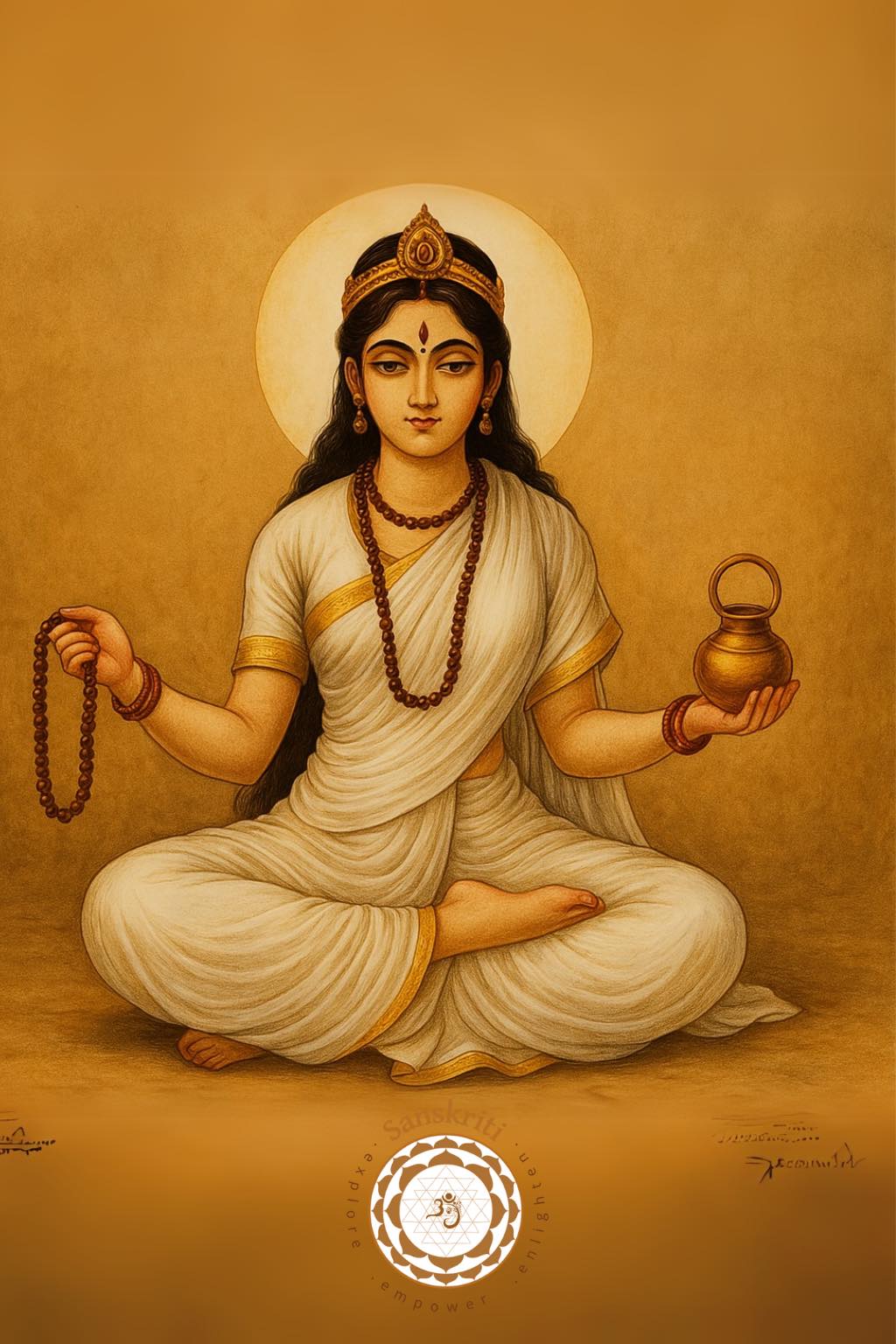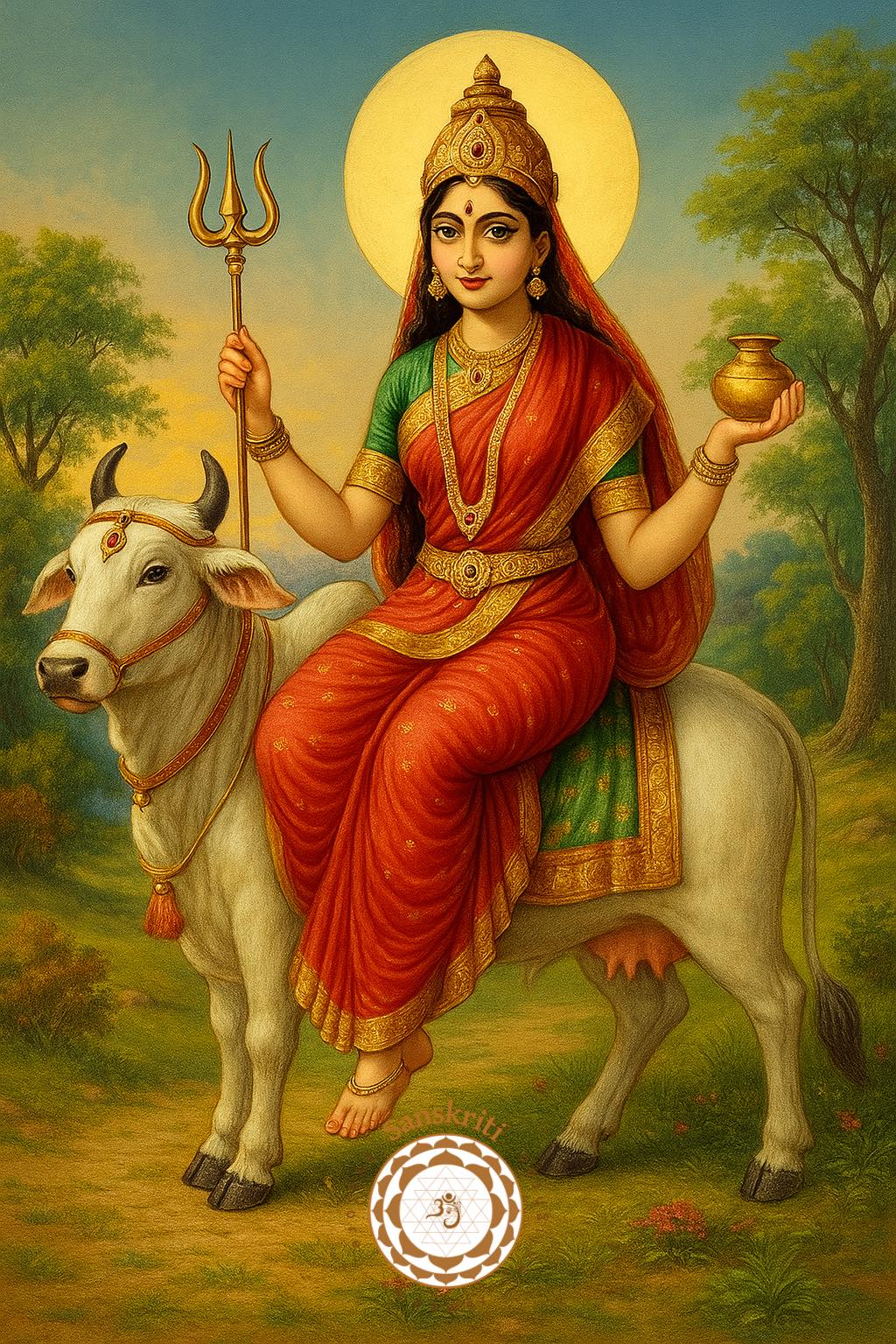Navratri is a nine-day festival dedicated to the nine forms of Maa Durga, celebrating feminine power, strength, and devotion. On the first day of Navratri, devotees worship Goddess Shailaputri, also known as the “Daughter of the Mountain.” Shailaputri represents purity and the embodiment of the earth element, and she is considered the first and foremost form of Goddess Durga. She rides a bull called Nandi, and holds a trident in one hand and a lotus in the other, symbolizing her power and beauty.
Significance of Day 1:
The worship of Goddess Shailaputri marks the beginning of the Navratri journey towards inner growth and spirituality. Shailaputri is a manifestation of Parvati, the consort of Lord Shiva, and also a reincarnation of Sati. In her past life, Sati immolated herself, and in her next incarnation, she was born as Shailaputri, the daughter of King Himavan, ruler of the mountains. This form symbolizes strength, stability, and patience, encouraging devotees to ground themselves in these qualities.
Spiritual Aspect:
Shailaputri represents the Muladhara Chakra, also known as the Root Chakra. On this day, devotees focus on the stability of their emotions and thoughts, preparing their body and soul to ascend spiritually throughout Navratri. Worshipping Shailaputri helps balance this chakra, bringing a sense of peace, harmony, and rootedness in one’s spiritual practices.
Rituals of the Day:
- The first day begins with the Ghatasthapana or Kalash Sthapana, marking the initiation of Navratri by invoking Goddess Durga’s presence.
- A Kalash filled with holy water is placed and adorned with mango leaves and a coconut on top. The Kalash is considered a symbol of auspiciousness and invites divine energy into the home.
- Devotees offer white flowers, pure ghee, cow’s milk, and other sweets to Goddess Shailaputri. Pure ghee is especially offered to seek her blessings for good health and prosperity.
- Fasting on this day is common, and many people eat only once or follow a diet without grains, instead consuming fruits, milk, and other fasting-appropriate foods.
- Chanting the Durga Saptashati and reciting specific mantras are integral parts of the rituals. These mantras are believed to invoke divine blessings, remove obstacles, and purify the mind and heart.
Color of the Day: Yellow
The color for Day 1 of Navratri is Yellow, symbolizing cheerfulness, positivity, and light. Wearing yellow is believed to attract positive energy and enhance feelings of warmth and happiness throughout the day. It also represents the sun and light, invoking a sense of inner awakening and radiance.
Mantra to Chant:
To receive the blessings of Goddess Shailaputri, devotees chant the following mantra: “Om Devi Shailaputryai Namah” Chanting this mantra helps invoke her divine presence and bestows strength, courage, and a sense of rootedness.
Prasad of the Day:
- Offering pure ghee as prasad is considered auspicious, as it signifies purity and devotion.
- Milk-based sweets and kheer are also prepared as prasad, which is later distributed among family and friends.
Story of Goddess Shailaputri:
The story of Goddess Shailaputri is deeply intertwined with her incarnation as Sati, the daughter of Daksha Prajapati, and her rebirth as Shailaputri, the daughter of the mountain king. When Sati married Lord Shiva against her father’s wishes, Daksha disapproved of the union and insulted her. Unable to bear the insult towards her husband, Sati immolated herself. She was reborn as Shailaputri, symbolizing resilience and strength, and eventually united with Lord Shiva again.
Devotees’ Practices:
- Devotees begin their journey with an earnest prayer to purify their hearts and prepare their minds for the rest of the festival.
- People set up their Navratri Golu (a traditional display of dolls) in southern India, and elaborate pandals are constructed in many regions to house large idols of Durga and Shailaputri.
- Bhajans and kirtans are organized in temples and homes, celebrating the divine glory of Shailaputri.
On this first day of Navratri, the worship of Goddess Shailaputri provides the foundation for spiritual growth and transformation. She represents the starting point of the spiritual journey, helping devotees build strength, stability, and grounding. As we celebrate Day 1, let us offer our prayers to Shailaputri, seeking her blessings for a prosperous and harmonious life.
Stay tuned for Day 2 of Navratri as we honor Goddess Brahmacharini, the symbol of devotion and penance.
Feel free to share these beautiful Navratri wishes with your friends and family to spread the festive spirit! Let’s come together in devotion and celebrate the divine forms of Maa Durga. ![]()
![]()

